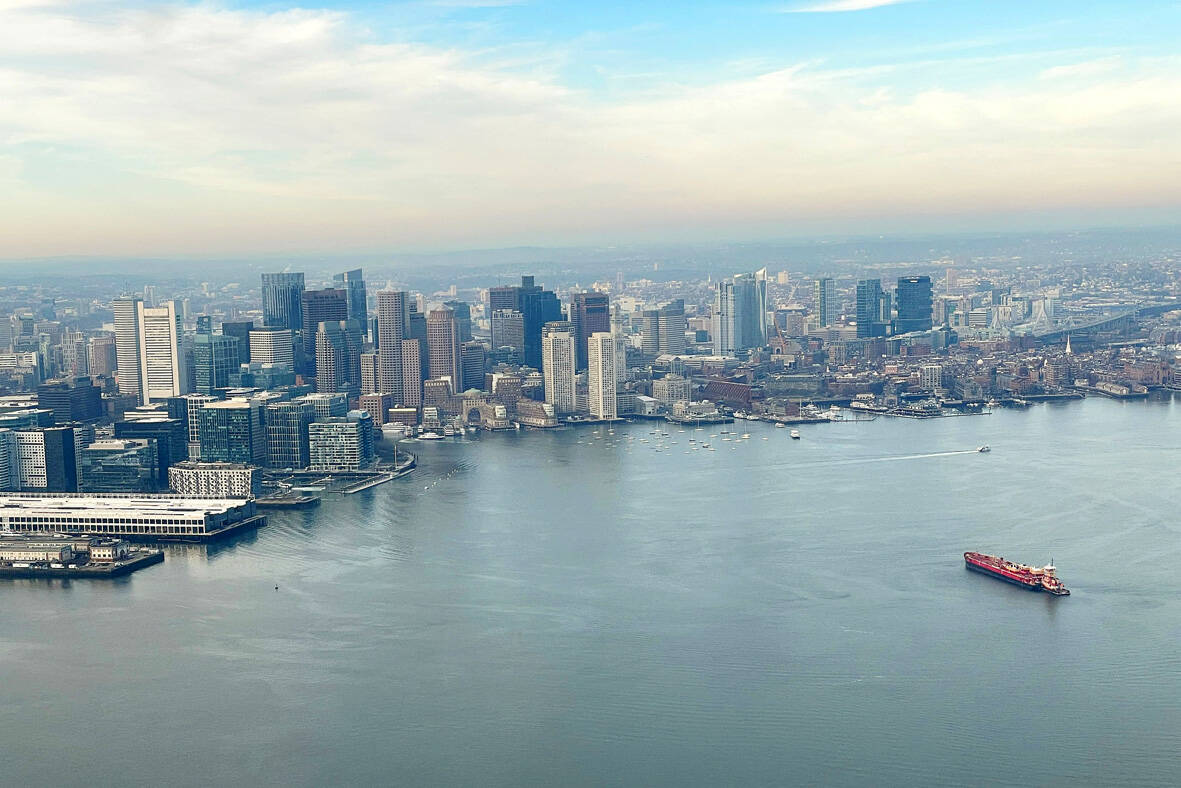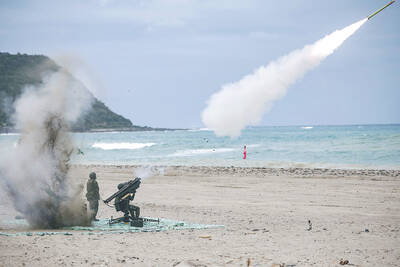Could fossil fuel companies be forced to remove planet-heating carbon pollution from the atmosphere? Researchers argue in a new paper that would be a cheaper, fairer solution to the climate crisis. They suggest, in the research published Thursday, that the principle of extended producer responsibility (EPR) — a policy tool often used to deal with waste — should be extended to the oil, gas and coal industries.
The study said impelling fossil fuel firms to use technologies to suck carbon from the air and bury it back in the ground would be a cost-effective decarbonisation strategy.
“It would also mean that the principal beneficiary of high fossil fuel prices, the fossil fuel industry itself, plays its part in addressing the climate challenge,” said the paper published in the journal Environmental Research Letters.

Photo: Reuters
The invasion of Ukraine by key oil and gas producer Russia has sent shockwaves through energy markets, resulting in prices surging and shining a spotlight on bumper fossil fuel industry profits.
The study’s authors, including scientists and experts in Britain and the Netherlands as well as a former ExxonMobil manager, said the paper was a response to the energy crisis and potential lessons for the challenge of getting to net zero emissions.
‘GEOLOGICAL NET ZERO’
“We need to start a conversation on how we redirect this colossal amount of money that currently is simply injected into fossil fuel rents to addressing the climate problem,” co-author Myles Allen, a professor at Oxford University, told journalists.
“We are going to have to stop fossil fuels from causing global warming before the world stops using fossil fuels.”
To do that, he said, requires “geological net zero” — for every tonne of CO2 emitted by a fossil fuel, one tonne of the greenhouse gas would need to be sucked out of the atmosphere and permanently put back in the ground.
The authors propose that all extractors and importers of oil, gas and coal be required to dispose of an increasing proportion of the CO2 generated by their activities and products — up to 100 percent by 2050. This would require increasing use of technologies to extract carbon dioxide at the emission source or directly from the air and store it permanently in the ground.
While there are projects doing just this already, these are not at anything like the scale needed. The largest direct air capture facility in the world, run by Swiss-based Climeworks, removes in a year what humanity emits in a few seconds.
LACKING ‘MOTIVATION’
But the economics would change if the fossil fuel sector were forced to rely on technology, the authors argue.
Hugh Helferty, co-author of the study and a former employee of oil giant ExxonMobil, said the industry is “capable” of removing CO2.
“What it lacks today is the business case, the motivation for executing it,” he told reporters at a press briefing, calling for regulation, like the rules banning lead in petrol.
Hannah Chalmers, Reader in Sustainable Energy Systems at the University of Edinburgh who was not involved in the research, said that EPR would be a “gamechanger” in delivering affordable low-carbon energy.
US oil and gas major Occidental last year announced plans to build by next year what the company says will be a bigger direct air capture project in the US Permian basin in oil field in Texas, with a one-million-tonne annual carbon dioxide removal capacity.
The Paris Agreement calls for capping global warming below two degrees Celsius, and most countries have signed on for a more ambitious limit of 1.5C. To meet that challenge, UN climate experts said in a landmark report last year that even under the most aggressive carbon-cutting scenarios, several billion tonnes of CO2 will need to be extracted each year from the atmosphere by 2050.

In late October of 1873 the government of Japan decided against sending a military expedition to Korea to force that nation to open trade relations. Across the government supporters of the expedition resigned immediately. The spectacle of revolt by disaffected samurai began to loom over Japanese politics. In January of 1874 disaffected samurai attacked a senior minister in Tokyo. A month later, a group of pro-Korea expedition and anti-foreign elements from Saga prefecture in Kyushu revolted, driven in part by high food prices stemming from poor harvests. Their leader, according to Edward Drea’s classic Japan’s Imperial Army, was a samurai

Approaching her mid-30s, Xiong Yidan reckons that most of her friends are on to their second or even third babies. But Xiong has more than a dozen. There is Lucky, the street dog from Bangkok who jumped into a taxi with her and never left. There is Sophie and Ben, sibling geese, who honk from morning to night. Boop and Pan, both goats, are romantically involved. Dumpling the hedgehog enjoys a belly rub from time to time. The list goes on. Xiong nurtures her brood from her 8,000 square meter farm in Chiang Dao, a mountainous district in northern Thailand’s

Located down a sideroad in old Wanhua District (萬華區), Waley Art (水谷藝術) has an established reputation for curating some of the more provocative indie art exhibitions in Taipei. And this month is no exception. Beyond the innocuous facade of a shophouse, the full three stories of the gallery space (including the basement) have been taken over by photographs, installation videos and abstract images courtesy of two creatives who hail from the opposite ends of the earth, Taiwan’s Hsu Yi-ting (許懿婷) and Germany’s Benjamin Janzen. “In 2019, I had an art residency in Europe,” Hsu says. “I met Benjamin in the lobby

April 22 to April 28 The true identity of the mastermind behind the Demon Gang (魔鬼黨) was undoubtedly on the minds of countless schoolchildren in late 1958. In the days leading up to the big reveal, more than 10,000 guesses were sent to Ta Hwa Publishing Co (大華文化社) for a chance to win prizes. The smash success of the comic series Great Battle Against the Demon Gang (大戰魔鬼黨) came as a surprise to author Yeh Hung-chia (葉宏甲), who had long given up on his dream after being jailed for 10 months in 1947 over political cartoons. Protagonist